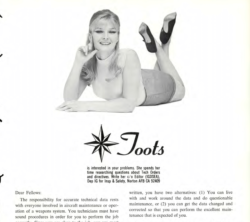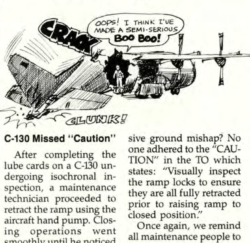You know those Safety magazines I’m talking about, right?
The ones that sit in the corner of the crew room.
The ones that literally nobody reads, but might be useful to scribble on, kill a fly, or jam a window open.
These ones.
They all look the same, right?
What you probably don’t know, is they are all the same because they are all put together in the same place.
This place.
This is Aviation Safety Publishing Ltd. They are in the south-east corner of the Croydon Business Park (between Wendy’s and Push Pilates). Their Company Number is 2713662 and their VAT No. is GB444553891.
Each month, the creative team gets together in the “Lindbergh” conference room. There’s free (drip) coffee and donuts (the dry supermarket ones). It’s a good time.
“Shall we do something different this month?”, asks the intern. After a moment of silence and some side-eye, everyone has a good laugh and gets back to selecting the airplane type for the front covers. The meeting is wrapped up by eleven. Back to the desks.
It’s been the same since 1990. That’s when computers came along and ruined everything. Before that, pilots actually read safety magazines. Instead of “What airplane goes on the cover”, the editors asked a different question: “How can we make this engaging and actually get pilots to read this stuff“?
That’s weird, huh: in the old days, the safety people cared whether or not pilots read it!
They had (actual) creative meetings. They had artists, and cartoonists, and designers. They pushed boundaries. They weren’t afraid to use humour, swear words, and satire. They weren’t even afraid to make it actually sexy!
Now, chill. I’m not saying this is a perfect example. Stripes are very 1950’s. But let’s have a look at some of the artwork and artistry from the pre-1990 era of aviation safety!
That feels different, doesn’t it?
Could it be, that if we are brave enough to think differently about safety, that we might get more pilots reading the very important messages that we want them to?
Here’s the thing. If safety is SEXY (my byword for engaging, exciting, attention-grabbing, and attractive), then it cannot feel sterile, corporate, empty, and aloof. And these are the reasons I don’t read the 2022 magazines.
But in the past, the whole vibe was different. It’s light, it’s easy, it’s fun. When I read that “olden days” safety magazine, it makes me want to participate. I want to read the articles, enjoy the art, and get involved. I’ll pass it along to a colleague. I’ll leave it on the flight deck for the next person.
These days, the only reason I’d leave a safety magazine for the next person, is for that fly I didn’t manage to swat before we landed.
Further reading
- A treasure trove of old-time safety magazines: Air Force Safety (but make sure to read the pre-1990 ones!)
- A trove (minus the treasure) of present day ones featured in the image:
- FAA Safety Briefing (June 2022, PDF)
- Airbus Safety First (2013, PDF)
- Vector – CAA NZ (Winter 2022, PDF)
- RAF Air Clues (2021, PDF)
- Office pictures are in fact from Steve Algren, view the story here.
More on the topic:
- More: Storm in the Cockpit: Tales of Conflict and Clashes
- More: The Safety Watchlist 2022
- More: Is breaking the rules always bad?
- More: Go-Arounds Aren’t Normal
- More: Danger Club is Back!
More reading:
- Latest: Venezuela & Caribbean Airspace Update
- Latest: ReFuelEU: Europe’s new anti-tankering rules explained
- Latest: US CBP biometrics: BizAv rollout still unclear
- Safe Airspace: Risk Database
- Weekly Ops Bulletin: Subscribe
- Membership plans: Why join OPSGROUP?

































 Get the famous weekly
Get the famous weekly 






As a safety officer for my department, I wholeheartedly agree. We do our best to work within the constraints of “acceptable behavior” but yet, be fresh and relevant. It’s not as easy as it used to be, but the “fun” safety folks are still out there. Thanks for the great article!